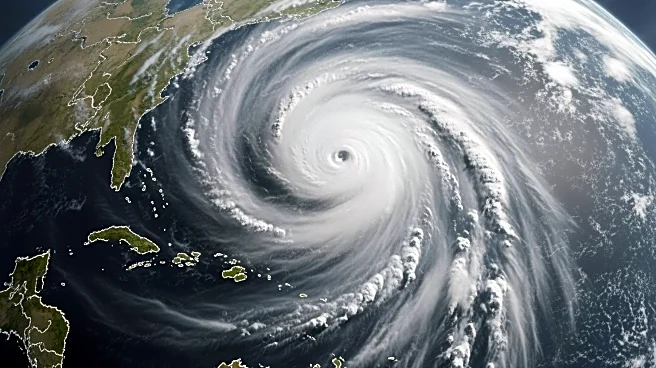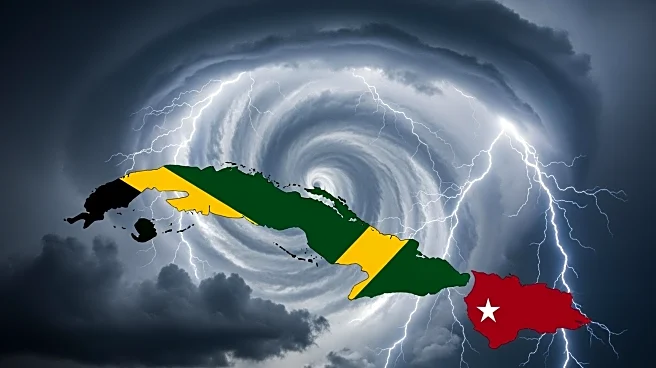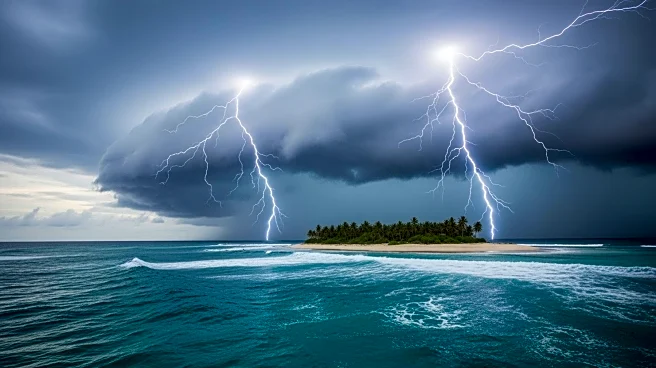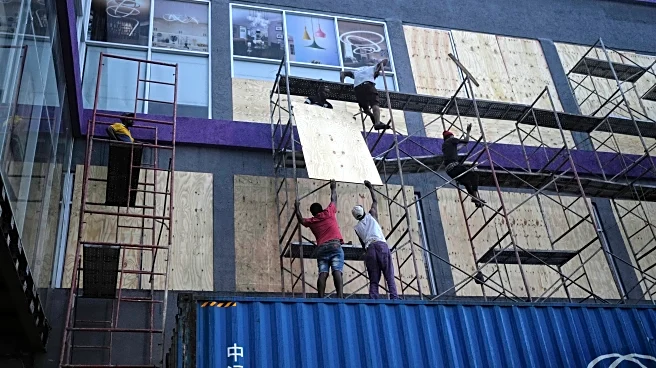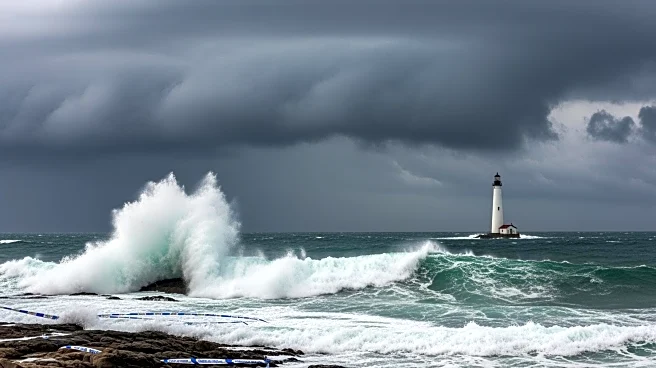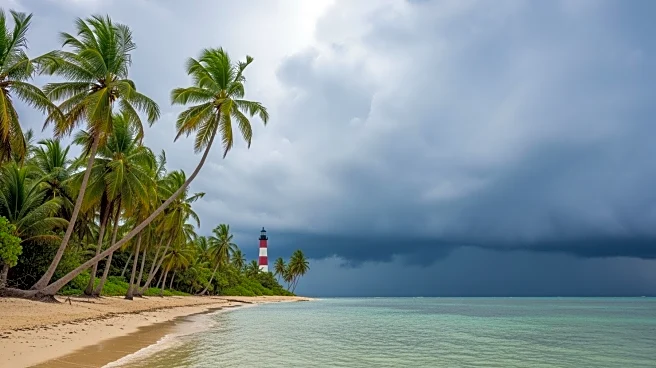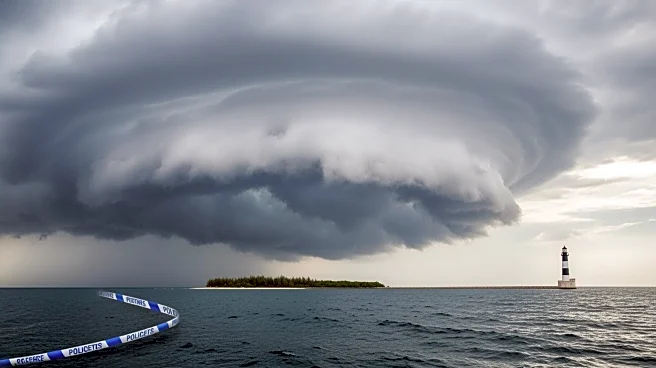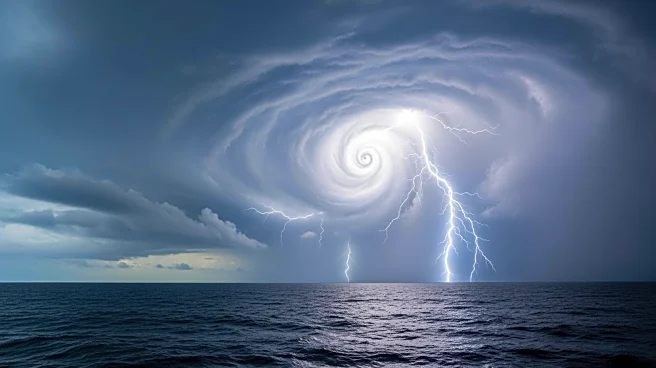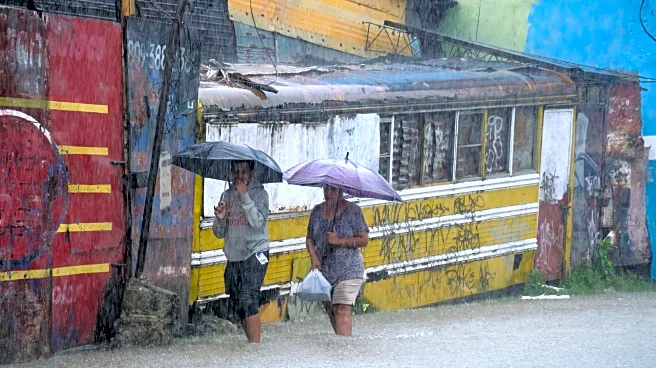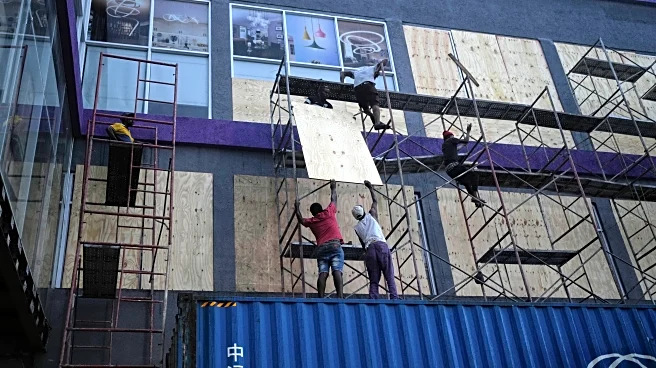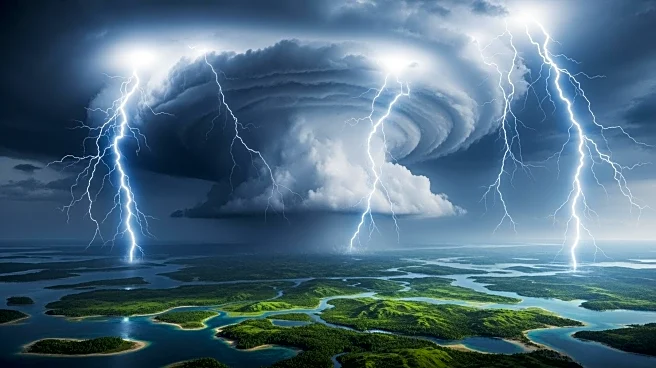What's Happening?
Hurricane Melissa has intensified to a Category 5 storm, posing a significant threat to Jamaica, Haiti, Cuba, and the Dominican Republic. The storm is expected to bring catastrophic flooding, landslides,
and heavy rain, with Jamaica forecasted to receive up to 30 inches of rain and a life-threatening storm surge. The U.S. State Department has issued travel alerts for affected regions, urging U.S. citizens to evacuate or prepare to shelter in place. The hurricane has already caused significant damage in the Dominican Republic, displacing thousands and cutting access to numerous communities.
Why It's Important?
The impact of Hurricane Melissa is expected to be severe, with potential widespread destruction in Jamaica, which could be the most powerful storm to hit the island in recorded history. The storm's slow pace increases the likelihood of prolonged devastation, affecting infrastructure, agriculture, and access to essential services. The humanitarian crisis in Haiti, where millions face hunger, is exacerbated by the destruction of crops and flooding. The storm's effects could lead to long-term economic and social challenges for the affected Caribbean nations.
What's Next?
Melissa is expected to make landfall in eastern Cuba, where authorities have ordered mass evacuations. The storm will continue to impact the Bahamas, with hurricane warnings in effect. Recovery efforts will be crucial in the aftermath, with international aid likely needed to support affected communities. The U.S. military has evacuated personnel from Guantanamo Bay, and further repositioning of naval assets may occur.
Beyond the Headlines
The storm highlights the increasing frequency and intensity of hurricanes, potentially linked to climate change. The Caribbean's vulnerability to such natural disasters underscores the need for improved infrastructure and disaster preparedness. Long-term recovery will require addressing the socio-economic impacts and rebuilding resilient communities.
